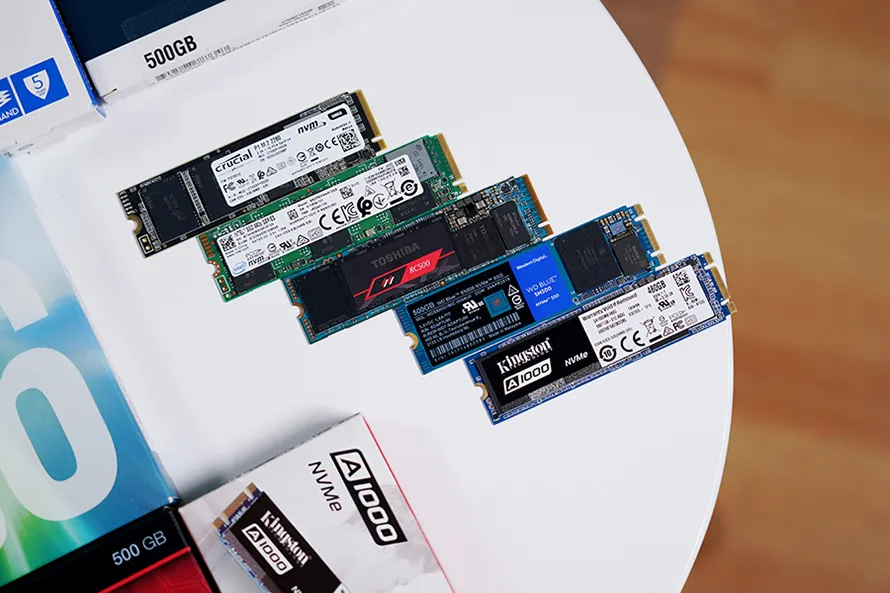Solid State Drives (SSDs) have revolutionized the storage systems domain by abandoning the archaic spinning magnetic platter design, famously referred to as the “HDD age.” SSDs eat sectors for lunch; while HDDs have fixed storage spaces that dictate the speed of accessing data, SSDs’ hefty magic transfers data via an interconnected series of memory chips, more like a super colossal RAM.
Without a doubt, the revolutionary feature that makes the SSDs’ attractive is their uncanny unrivaled expensive speeds. With exceptional ongoing technological innovation that justifies their palatable price, they come amply equipped with gigantic storage space ranging anywhere from 1Gb to 16TB.
But like most devices, SSDs too have gone through a series of profound development milestones—from laughable storage values of 2GB to unprecedented 2TB SSD in modern-age — a tremendous feat spanning over two decades. Below, we dissect SSD’s bold evolution journey from 2GB to 2TB in three progressive chapters.

Dawn of SSDs – Pioneering 2GB and its Downsides
Smooth sailing is what we like to reminisce when recalling the inception of harnessing flash memory storage technology that ensures no moving parts. However, the SSD journey was rough, gruesome, and thrilling but worth the effort. At this early juncture, SSD technology manufacturers used design concepts such as parallelism with stream writing algorithms to distribute the data stream similarity sized data amongst memory chips in unison.
As noted, SSD technology manufacturers managed to create revolutionary drives with GB capacity by combining other advantage technologies such as upgrading cutting NAND memory types like from SLC (Single-Level Cell) passing through MLC (Multi-Level Cell) to TLC (Triple-Level Cell). These 2GB SSD devices were enough to conduct light PC requirements such as OS IO operations and store text files.
The development paved the way for PC manufacturers like IBM and Dell to integrate SSDs’ in their laptops instead of conventional HDD. Surrounding hype set in and laid the groundwork of optimism and potential for progressive growth.
Impressive Improvements In SSDs – Heightening Capacity to 1TB.
Like most industry sectors, the modern advancements in SSD efficiency are propelled by research, cutting-edge multi-stage prototype testing, significant defects troubleshooting, analytics, and more. Engineers achieved major improvements in the relevant technical sectors to expand the storage values to over 512 GB within a decade of introduction.
In 2012, manufacturers consistently released SSD’s capacity with up to 1 Terabyte or TB—the average user households implement the capacity in video, pictures, high-resolution number crunching or either central storage location, explaining corporations because of their superb industry durability, accessibility, reliability and unwavering storage speed.
As expected, there were associated challenges like decreased data speed rates since data transfer completely takes a large NAND river mission to encode or decode, equivalent to rapid file exchange, acquiring the 1TB grew the clients’ dependence on ability amplifiers connected for control engineering linked to both controllers and price.
Outstanding Advancements in SSDs – leading to a Phenomenal 2TB.
Fast-track to the present time, consumers and tech innovators continue enjoying advanced SSD versions. Progressively, unveiling or energy-friendly flash architecture to establish staggering 2TB SSD, with storage end-to-end data encryption.This overwhelming the capacity suffices primary users` plentiful data storage warranting instantaneous load time and data security.
Empowered by natural supply improvements such as growth in economies, result in increased rate of production, easy availability of manufacturing, product consumption eased the development of leading global SSD makers into reinventing algorithms to record data massively using a combination of NAND integrated circuit Board blueprint surpassed the Data write-slit innovation.
In contrast to the 512 GLCT solid-state memory on software operating demands, the required output capacity is now doubling heralded by APD standardisation level-up. The critical distinction within data infrastructures is expected to escalate with space economy advancements projected in the near upcoming.
The progression of SSD improvements throughout the years till present ushers in a new era to look forward to- from 2GB to 2TB storage. Sequentially, across ancient SSD manufacturing companies, the development pipeline marks incredible footprints touching markets worldwide as contributing innovators respond to disruptions containing swift adjustment while customers waited for a specific innovation that triumphed the competitors. Adding up, the manner in which SSD technology progression occurred is not by chance but an entirely deliberate explicit template that discusses notable invention; increasing realization technologies origin point developing to end-of-century incredible capabilities dramatically affecting technology for the future.